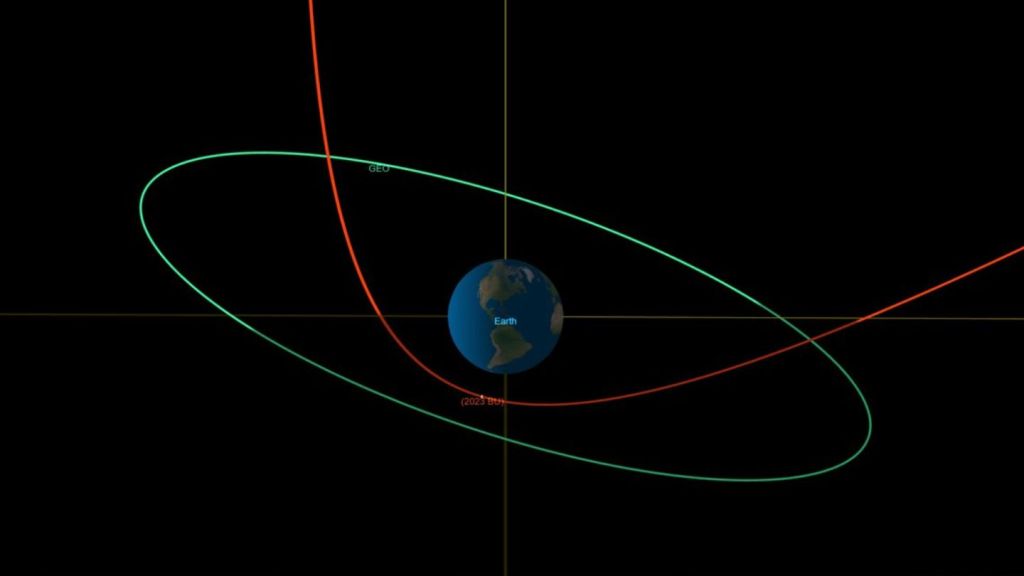Scientists have discovered a colossal impact crater hidden under a mile of ice in northwest Greenland, according to a new study in Science Advances that could have major repercussions for several scientific fields.
The crater stretches for 31 kilometers (19 miles) underneath Hiawatha Glacier, and was blasted into existence by a mile-long iron asteroid that unleashed the equivalent of 700 one-megaton nuclear bombs of energy upon impact. It is the first impact crater ever detected under Greenland’s ice cover, and ranks among the top largest 25 impact formations known on Earth.
Videos by VICE
The discovery has been in the making since 2015, when lead author Kurt Kjær, a geochemist at the University of Copenhagen, noticed a weird depression under the glacier in maps made by NASA’s Operation IceBridge. The odd contour reminded Kjær of the Cape York meteorite that crashed into Greenland some 10,000 years ago, leaving enormous chunks of iron strewn across the same region as the glacier. What if the depression and meteorites were tied to the same impact event?
That direct link has not been conclusively drawn yet, but Kjær and his colleagues have produced multiple compelling lines of evidence to suggest that the crater was probably formed during the past 100,000 years.
Kjær was able to convince Copenhagen’s Carlsberg beer company to fund radar sweeps of Hiawatha Glacier in 2016, which revealed geological contours consistent with a recent impact, including a high peak in the center of the crater. The team’s onsite trips to the region turned up mineral samples that backed up the asteroid impact hypothesis, such as quartz crystals likely formed by a shockwave.
Read More: Nobody Knows How This Part of Mars Exploded
As a bonus twist, the discovery may shed light on the heated scientific debate over what catalyzed the Younger Dryas, a period of sudden global cooling in the Northern Hemisphere from 12,800 to 11,700 years ago. A 2007 study suggested that the Younger Dryas could have been set off by an asteroid impact that plunged the hemisphere into ecological disarray and helped wipe out megafauna species like mammoths.
Rebuttals to this idea abounded, and the Hiawatha Glacier crater could end up being totally unrelated to the Younger Dryas. But for now, it’s one of many intriguing questions that Kjær’s team hope to pursue in future research.
“This study suggests several avenues for further research into both the nature and age of the Hiawatha impact crater and other possible subglacial impact craters,” the authors concluded in the study. “In particular, an improved geochronology for this impact event awaits the discovery and analysis of additional samples, from either within the crater itself or the surrounding area.”
Get six of our favorite Motherboard stories every day by signing up for our newsletter .




